The Fractal Design Node 202 Case Review: Mini-ITX Gaming For the Living Room
by E. Fylladitakis on June 6, 2016 9:15 AM EST- Posted in
- Cases/Cooling/PSUs
- Mini ITX
- HTPC
- Fractal Design
- ITX
The Interior of the Fractal Design Node 202
The removal of the top cover is an easy process, as the panel comes off after the removal of its holding screws from the bottom of the case. This is also necessary for the user to gain access to the top air filter, as it is attached to the inside of the top cover.
The lower cover can also be removed, and has to be removed in order to access the lower intake filters beneath the video card and the PSU. This cover is not held with screws but with plastic clips, allowing it to come off after undoing them one-by-one. After the cover has been removed, the magnetic filters can be removed from the bottom of the case.
Fractal Design essentially ditched 5.25” and 3.5” devices completely and organized the interior of their case so as to fit a standard gaming system with a full size video card. The interior is essentially split into two areas, one for the motherboard and the PSU to the right and one for the video card to the left. The two areas are split by a steel support wall.
The PSU compartment is small, allowing the use of SFX units up to 130 mm long. In order to install the PSU, the frame needs to be removed, attached to the unit and then reinstalled along with the PSU.
An ITX motherboard just barely fits inside the Node 202, with minimal space around the board for cable management. After the PSU has been installed, managing the cables using the cable ties is a somewhat tedious process. There is little clearance for a cooler and only coolers up to 56 mm tall may fit, which can cause compatibility problems even with some high-performance stock coolers. There is also no slot for a low profile card and expansion cards can only be installed by using the supplied PCI Express riser card.
Only two 2.5” drives can be installed in the Node 202, on the metallic drive cage that is attached to the middle support wall between the compartments. The cage is designed so that one drive will be in the left compartment and the other drive will be in the right compartment. The support wall has an opening where the cage is installed, allowing the passage of cables for the drive in the left compartment of the case.
The most important feature of the Node 202 is its capability to support full size PCI Express video cards. However, there are limitations. The card can only be up to 310 mm long and up to 50 mm thick, if no intake fans have been installed beneath the card (or if 10 mm low profile fans were installed). If 120 mm × 25 mm intake fans are installed, the thickness of the card is limited to 35 mm. Although these may sound constrictive, the vast majority of mainstream gaming cards do fit in the Node 202 (ed: a reference GeForce GTX 1080 would be 266mm long). The small number of custom, top tier cards that do not fit would also be incompatible with the low power output of the supported SFX PSUs and possibly cause thermal issues as well.
Fractal Design has also placed a support for the card that can be adjusted via a screw at the bottom of the case. This may seem redundant for when the case is placed horizontally, but vertical placement could have a heavy card slipping out of the PCI Express slot, so the case design takes this into account.
An overall look with a system inside the Node 202 reveals that the build will be tight, with little room for cable management or modifications. It may be wise to select either Fractal Design’s own Integra SFX 450W PSU, which has been designed with this specific case in mind, or a modular SFX PSU.
Regardless the tight fit, a gaming system using an efficient CPU and mainstream video card, along with one or two SSDs, does fit in the Node 202 without issues, creating a very good gaming system. However, this is essentially the sole purpose of the case. If an expansion card is not installed (e.g. the user is content with integrated graphics) then the left compartment essentially is a dead area. No advanced liquid cooling solutions can be installed due to the wall separating the compartments and there is no way to support 3.5” drives without modifying the case. This prevents the Node 202 from being used as a file server or as a HTPC with large internal drives hosting media collections.


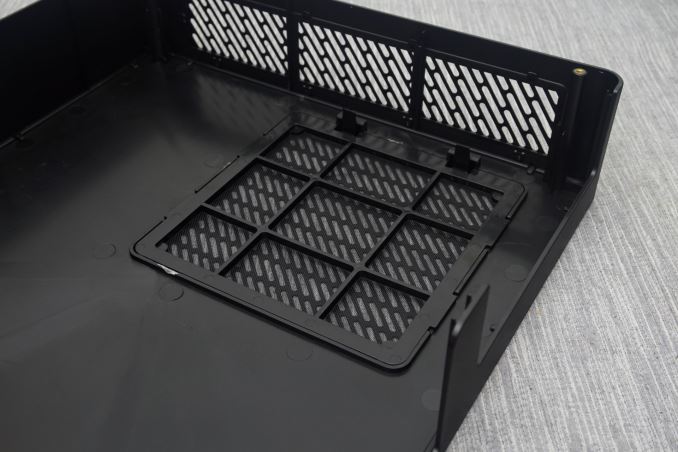
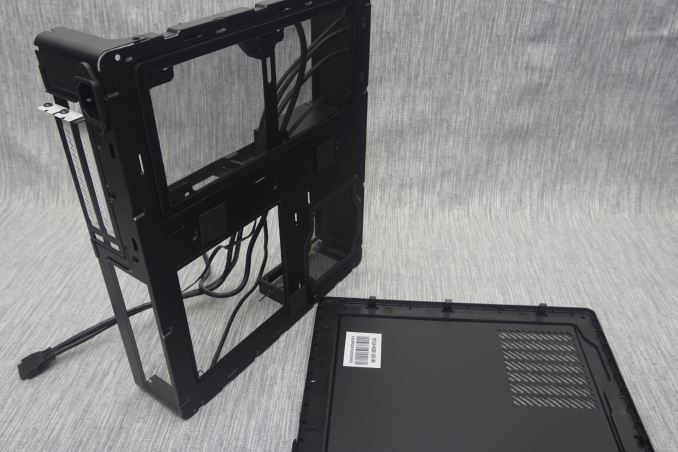
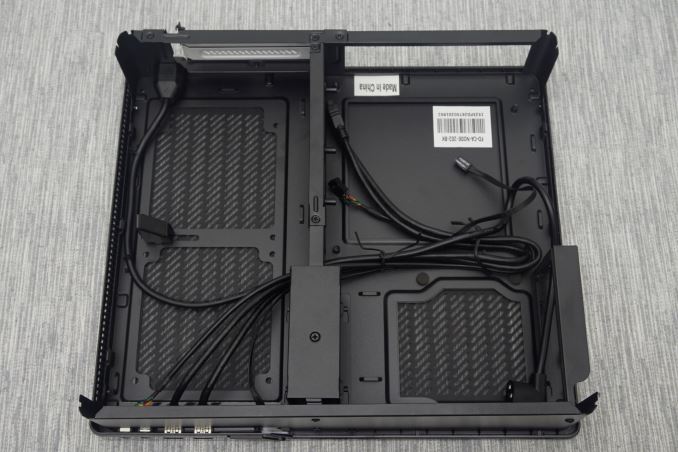
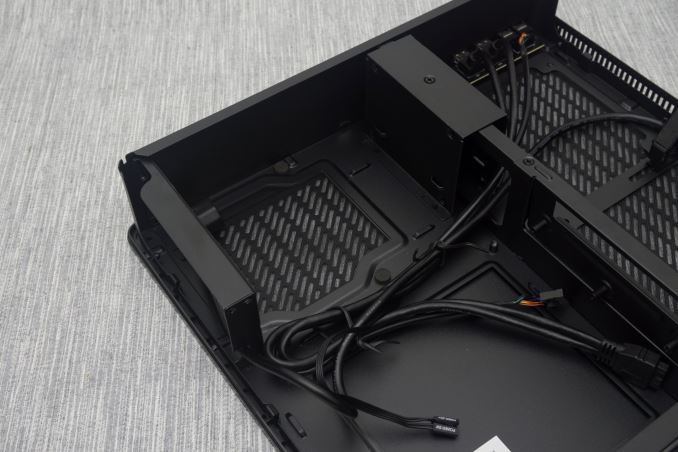

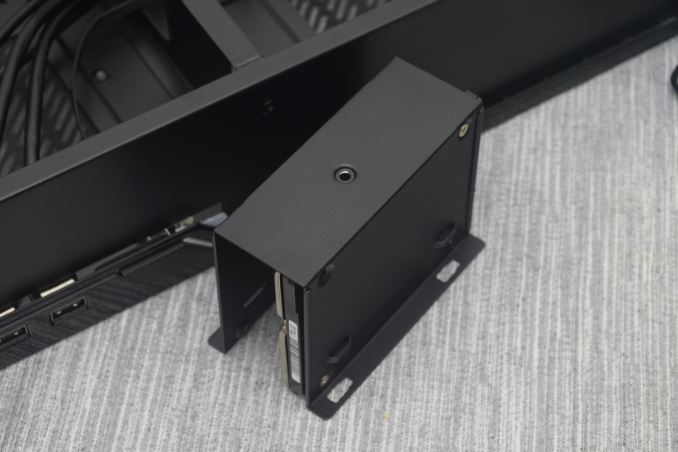
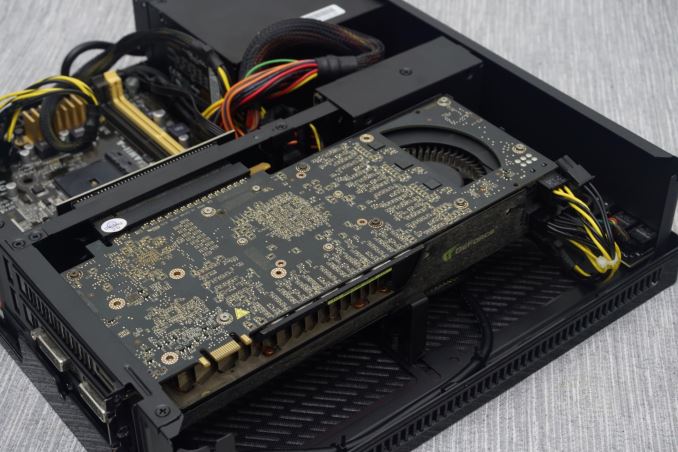
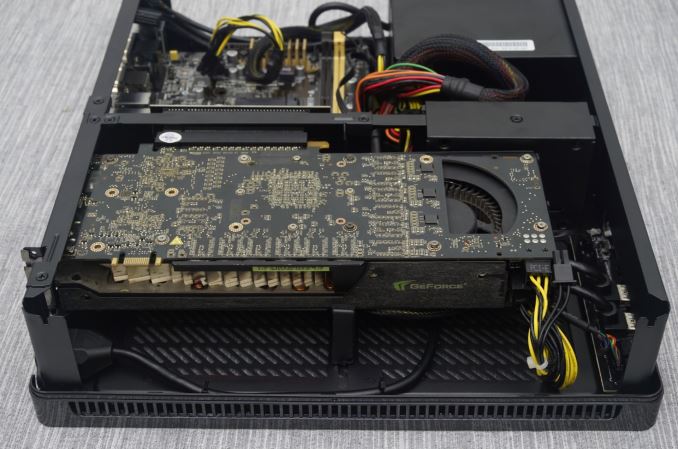
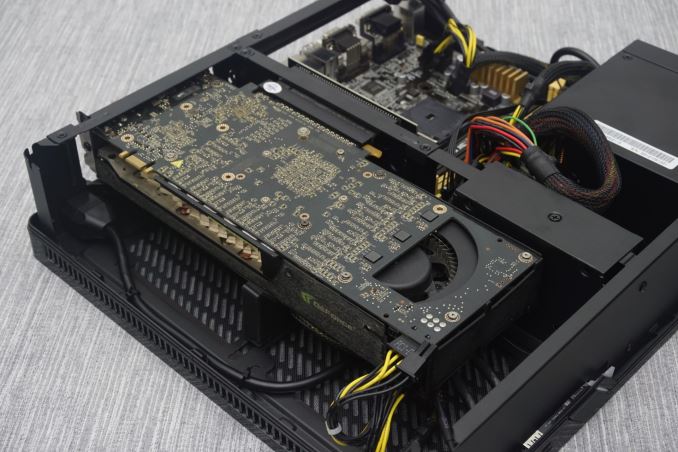
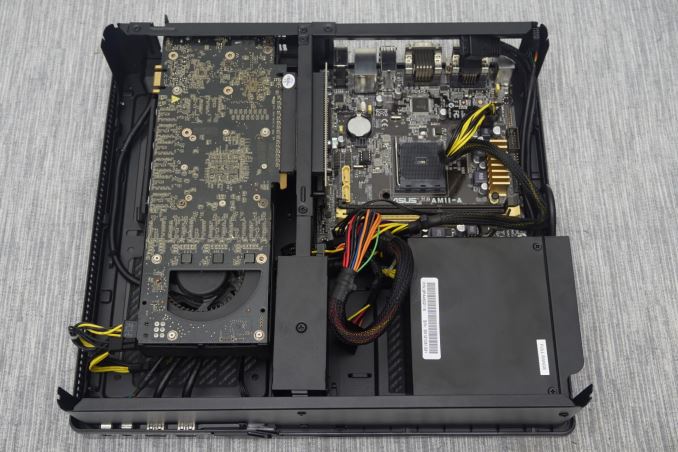








64 Comments
View All Comments
bill.rookard - Monday, June 6, 2016 - link
Agreed. I'd like to see a no-compromises SFF that uses a mATX board.lmcd - Monday, June 6, 2016 - link
Silverstone SG09 and SG10 are as close as you'll get I'd imagine. I have the SG09 and toted it from university and back for most of two years (before finally getting tired of it and ordering a Skull Canyon box).Tikcus9666 - Monday, June 6, 2016 - link
It is possible for HTPC use, an external optical drive could be added (not as neat as an internal) and there are plenty of 7200 rpm 2.5" HDD available, and SSHD drives, not to mention NASedzieba - Tuesday, June 7, 2016 - link
A gTX 295?! No wonder the thing was cooking itself: compact cases - particularly ones without auxiliary ventilation fans - benefit greatly from rear-exhaust coolers, rather than ones that exhaust into the case itself.Xajel - Tuesday, June 7, 2016 - link
I wonder when will these companies build a home-theatre + home-server case in the same time... the smallest size which can fit 4~5 3.5" HDD's (maybe 4x 3.5" + hybrid 3.5" which can also fit 2x 2.5"), SFX PSU, miniITX, and a mid to entry-high end gpu... with a good looking design and good front panel connectivity ( including IR receiver )AbRASiON - Tuesday, June 7, 2016 - link
You can do so much more with the ITX form factor than this. I'm sure this appeals to some but I'd rather just see a smaller, neater, nicer, but still mildly roomy, Node 304. Think SUGO08 sized but with more features or something.JoeyJoJo123 - Tuesday, June 7, 2016 - link
I don't think you realize that the Node 304 is a pretty large ITX case, so when you say "smaller ... Node 304", you're actually mistaken.Node 304 volume: 19.5 Liters
Node 202 volume: 10.2 Liters
It's literally almost twice as large as the Node 202 in volume.
The Node 304 is neater, due to the additional space for cable management, very roomy as far as ITX cases go, and nicer due to the aluminum front panel.
AbRASiON - Wednesday, June 8, 2016 - link
Sorry my post was poorly written. The Node 304 is obviously a larger case but it's a very very nice case which looks better and can fit more, yet it's stylish and relatively quiet.My SUGO08 however is smaller than the Node 304 and also vastly superior to this ugly and impractical looking Node 202. I have a 'normal' power supply, massive CPU cooler (considering case size) can take a full size GPU and 3 SSDs or 1xSSD and 2x3.5" HDD
AND it's quiet
Haravikk - Tuesday, June 7, 2016 - link
The height of this case is a bit disappointing; it doesn't seem like there would be much to lose by making it a little taller and thus able to accommodate more of the low-profile coolers, in fact, most of the good ones require 60-70mm so this seems like too much of a sacrifice. Placing this horizontally is never going to be a great option due to how easily you'll restrict airflow, so it makes a lot more sense to just put it vertically, in which case it doesn't matter much if it's a centimetre or two "taller" (wider in that orientation).Having to disassemble the case to remove the dust filters is likewise poor design; I can't imagine it would have take much to have them accessible via a slot and just pull them out, clean and slide back in.
So I dunno, aesthetically it looks nice, and I like that the GPU is properly partitioned from the motherboard area, but I can't help but feel like the attention to detail on this is otherwise poor.
Scootiep7 - Tuesday, June 7, 2016 - link
The lack of a spot for a slim drive simply kills 3/4's of miniITX cases. Like it or not, BluRay & even DVD's are still a large part of your average user's media library and most simply don't have the budget for dedicated NAS with the capacity for everything. Streaming services rarely have all of your favorite movies right when you want them. Netflix, Amazon Prime, and Googles offerings on Youtube being poster child examples of a lackluster movie selection. Quite simply, if you want to beat the console market in the living room, find the friggan space for a slim optical drive. End rant.